add the milk with yeast to flour slowly | 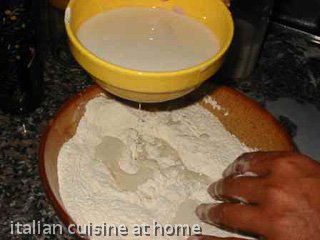
|
knead the dough for piadina and stop as soon as you get a smooth ball not sticking neither to your hands nor to the counter, but remaining elastic. | 
|
Place the dough for piadina it into a clean bowl, cover with a film so that it is fully sealed and put it in a warm place (near a radiator is enough) |  |
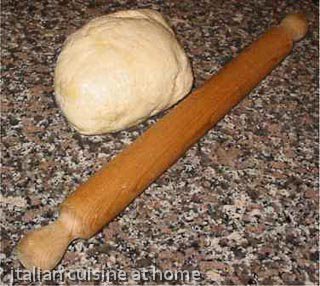 | After some hours the volume of the dough for piadina will increase from 30 to 50 percent. It is ready to be rolled. You can also store the dough for piadina in refrigerator for a few days (better raw than cooked) |
 | cut the dough for piadina to small balls (the measure of a tennis ball.) |
 | With the rolling pin roll the dough for piadina until a disk, thick approximately 1/12 inch (2 millimeters) |
 |  |
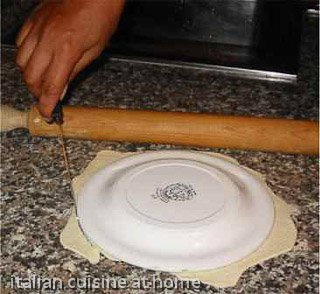
| If the shape of the dough for piadina is not well regular, cut to circles, helping you with a dish . |
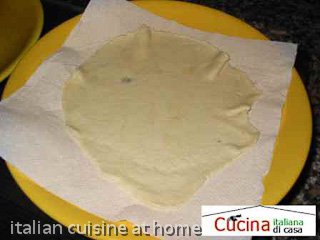 | if you put the circles of dough for piadina on a dish divide them with some paper, or they will become stuck |
Heat the "testo" i.e. the earthenware tool, or a simple pan of iron, and place the disc of dough for piadina. Pierce it with a fork at intervals of around 1 in (3 cm) and begin cooking piadina | 
|
As soon as bubbles are forming on the surface turn it. It takes 2 or 3 minutes for piadina | 
|
if you do not serve immediately cover the piadine with a cloth, to keep humidity and heat. For tasting piadina at its best serve hot | 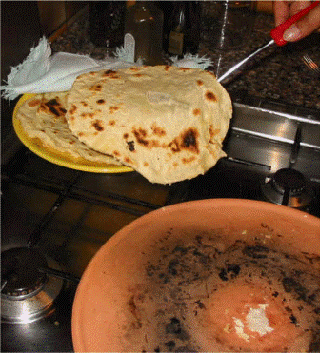
|